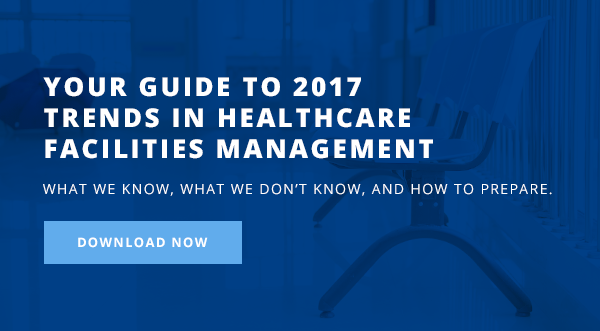The job of a hospital facilities manager is seemingly never done. Perhaps more than any other facilities management job, at a hospital or healthcare facility, FMs must be knowledgeable about areas well beyond maintenance and staff management.
In a hospital, infection control is critical. Without infection control protocol, both patients and staff can be put at risk, which means knowing about infection control and disinfection is an essential part of the hospital facilities manager job description.
But what does a facilities manager really need to know? What should you be paying attention to daily, weekly, monthly, annually? We break down the elements of disinfection and infection control that will keep your facility compliant, safe, and efficient.
Four Critical Areas of Infection Control
According to Health Facilities Management Magazine, there are four key areas of infection control that are most important for an FM to understand and incorporate into his or her daily tasks:
- Proper pressurization
- Legionella
- Construction risks
- Pharmacy control
Let’s look at all of these a little closer.
Proper Pressurization
Air pressurization is a huge concern when it comes to hospital-acquired infections (HAIs). Isolation rooms, where patients present a risk to staff and other patients, should be at negative pressure so that no air from inside the room can travel out. On the other hand, operating rooms should be kept at positive pressure so that immunocompromised patients are not exposed to germs from the rest of the facility. Maintaining and monitoring these pressures is an essential part of the healthcare facilities manager’s job.
Legionella
Legionella is a major concern in the healthcare environment. This bacteria thrives in stagnant water and other water sources. Regular flushing of water systems, particularly in areas of the hospital where water is not consistently used (such as construction areas), can be an effective defense against this hazardous bacteria, but UV disinfection is another option.
Construction
At HEPACART™, we’re well aware of the hazards that construction can present to infection control. As a facilities manager, it is essential that you take proper precautions and utilize the right tools to mitigate construction dust, debris, and even noise from impacting the level of care patients receive.
Pharmacy
Finally, the pharmacy is another high-risk area in any healthcare facility due to the existence of compounding sterile preparations (CSPs). Guidelines around CSPs vary from state to state, but regardless of your geography, you must ensure a clean and safe environment for CSPs in your facility for the safety of its patients.
Disinfection Monitoring
Without regular monitoring, infection control measures can often fall short. Organization is a critical skill for facilities managers because you do have to work to keep track of so many moving parts, including knowing when a room was last disinfected or checked for pressurization. In very high-risk areas, such as operating rooms or isolation rooms, these kinds of checks should be performed daily. Some space, such as utility closets can be checked less often. Implement a process for regular disinfection monitoring for best results.
Disinfection Risks
When it comes to infection control facilities managers also need to consider the risks posed by certain types of disinfection measures and take precautions to mitigate those risks. Hospital UV disinfection protocols, for example, should have specific safeguards in place to ensure that personnel using UV lights are trained in their use and are properly protected. The same goes for any disinfection method in a hospital. Those staff who disinfect patient rooms, operating rooms and even utility closets should know exactly how to use the tools of the trade so that areas are disinfected, and they are protected.
